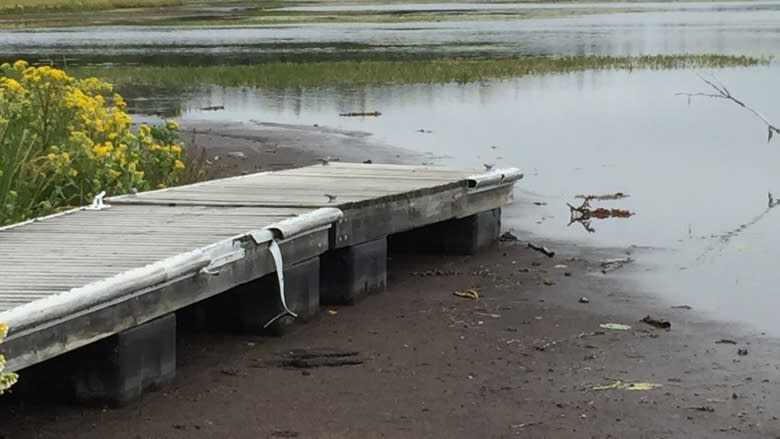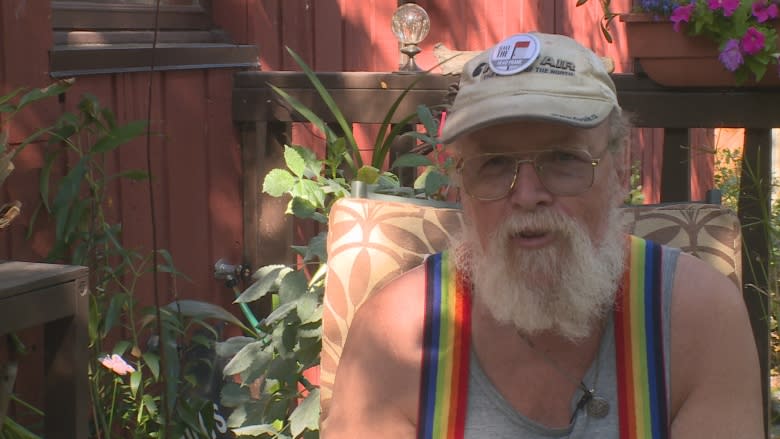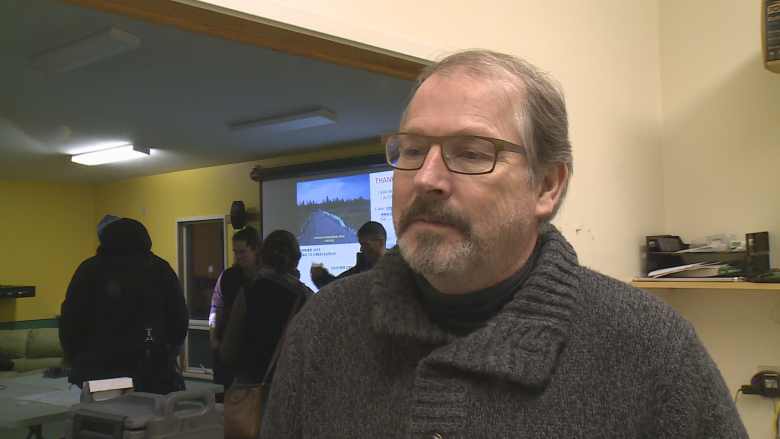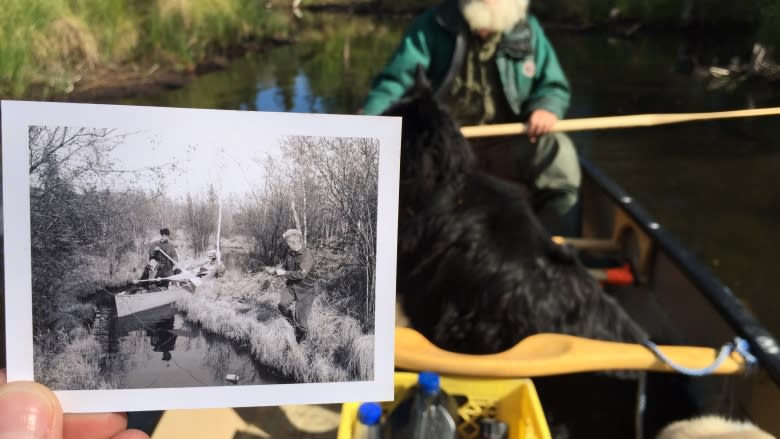Cabin owners question 'disappearing' water on lakes outside Yellowknife
Cabin owners in Yellowknife are questioning why water levels on and around Walsh Lake have dropped so drastically this summer.
Mike Dove bought a cabin on Walsh Lake, about 16 kilometres outside Yellowknife, seven years ago.
He said he used to have "no problems" navigating the small creek that flows from Vee Lake to Walsh Lake — the only access to his cabin. But now, his 19-foot Misty River boat can't make it a few feet before its hull gets caught in the rocks or muck at the bottom of the creek.
"I want to use the cabin, but I can't do it with the boat I have," Dove said, adding he bought a 14-foot boat to replace the one he has.
Water levels in the N.W.T. have been dropping for at least three years, but many people say they've never seen a drop like this one.
Dave Lovell, who was born and raised in Yellowknife and whose family has had a cabin in the area for decades, says the water levels are "catastrophic," dropping about a metre, or three feet, in one year.
"That's a lot of water. And that's this whole lake that's down that much. That is one heck of a lot of water."
'Very small area... very hot summer'
The obvious low levels of the Walsh Lake watershed start at Vee Lake, when boaters go to launch their boats. This season, one of the docks is completely out of the water.
Walt Humphries has owned a cabin nearby for 25 years. He's also a prospector and has a number of mineral claims around Walsh Lake, which means he's been visiting the lake every year since he first came to Yellowknife in 1974.
As a prospector, Humphries studies the activities of the lake. He says Walsh Lake and a couple surrounding lakes are part of a very small watershed, which means their runoff water comes from about only about a kilometre away.
Humphries says the smaller the watershed, the larger the effect rainfall, snow melt and hot temperatures will have.
"It's just a matter of a very small area, a very hot summer, then the evaporation is quite heavy on those lakes and they don't have the feed from other areas," Humphries said.
Elizabeth Hendriks, the vice-president of the freshwater program at the World Wildlife Fund Canada, says the reasoning behind the extremely low water levels is just as complicated as Humphries points out.
"Depending on the complexity of the issue, you could spend millions to try to figure out [the reason] and never have a really substantiated answer," Hendriks said.
She says water levels can also be affected by permafrost and nearby developments.
Nearby drilling has 'negligible effects'
TerraX Minerals Inc. is drilling for gold along the shorelines and underneath Walsh Lake, which means it's using the watershed's water for its project.
Joe Campbell, the president of TerraX, says the amount of water the company is using "has negligible effects on the lake levels.
"The waterline that goes up to a drill is a one-inch hose," said Campbell. "The water pumps that sucks that water out of the lake is about the same size that somebody would have at their cottage. It's a very small amount of water."
He says according to the company's licence, TerraX is allowed to use about a water truck worth of water each day.
But he says most of that water circulates back into the lake
"So what happens is it's used to run the drill, it goes into an area where the [drill] cuttings settle out, and eventually percolates back into the same watershed.
"So we're not... taking it anywhere outside the watershed."
Years until recuperation
Lovell says based on trends he's observed over the decades, it will take at least three years before water levels of the Walsh Lake watershed will go up to what they used to be — and that's if the area gets a lot of rain, as well as a mild, wet spring.
He's afraid Yellowknife's drought will continue, and that creek between Vee Lake and Walsh Lake will become an unavoidable portage.
Meanwhile Dove says if water levels don't come up soon, he's hoping someone will build an access road to Walsh Lake.
"Something so that we could get to Walsh through the Vee Lake access road."






